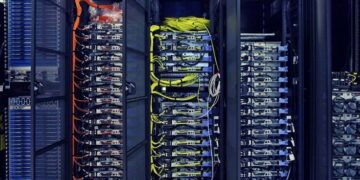Dental implant technology has come a long way in recent years, offering life-changing solutions for individuals with missing or failing teeth. What was once a fairly invasive and time-consuming procedure has now evolved into a sophisticated, highly precise treatment with faster recovery, better aesthetics, and improved long-term success. Whether you are considering implants or simply want to stay updated on the latest innovations, this article highlights the most exciting advancements in implant dentistry.
From digital planning tools to bio-compatible materials and regenerative techniques, the field of implant dentistry is advancing rapidly. These innovations not only improve patient comfort and outcomes but also expand treatment eligibility to people who previously may not have been candidates for dental implants.
The Evolution of Dental Implants: A Brief Overview
Dental implants have been used in clinical dentistry for several decades. Traditionally, the procedure involved placing a titanium post into the jawbone to serve as an artificial root, followed by a healing period before the prosthetic tooth could be fitted.
While still effective, earlier methods often required extensive healing time, bone grafting in certain cases, and carried the risk of implant failure due to poor bone integration. With today’s technology, however, the process is quicker, more accurate, and more reliable than ever before.
Digital Implant Planning and Guided Surgery
One of the most transformative developments in implant dentistry is the integration of digital tools. Dentists now use 3D imaging, cone-beam computed tomography (CBCT), and computer-aided design/computer-aided manufacturing (CAD/CAM) to plan implant procedures with remarkable precision.
These tools allow clinicians to map the patient’s jawbone structure in three dimensions, identify the ideal implant position, and create a virtual treatment plan before making any surgical incisions. The benefits of this digital planning include:
- More accurate placement of implants
- Reduced risk of damaging nerves or adjacent teeth
- Faster procedures with less trauma
Surgical guides, often created using 3D printing, are also employed to assist with implant placement. These guides ensure that implants are inserted at the correct depth and angle, improving both functionality and aesthetics.
Immediate Load Implants
In the past, patients often had to wait several months between implant placement and the attachment of the dental crown. Thanks to new protocols and improved implant designs, immediate load or “same-day” implants are now a viable option for many cases.
This technique allows the placement of a temporary prosthetic on the same day as the implant surgery. While the permanent crown is still attached later after full integration, the immediate load option significantly reduces the treatment timeline and provides an aesthetic solution right away.
This is especially beneficial for front teeth, where patients are naturally more concerned about appearance. It also reduces the emotional and practical impact of missing teeth during healing.
Advanced Biomaterials and Surface Technology
Another area of innovation is in the materials used to manufacture dental implants. Titanium is still the gold standard due to its biocompatibility and strength, but advancements have improved how the implant surface interacts with bone tissue.
Nano-textured surfaces, plasma-sprayed coatings, and sandblasted or acid-etched implants all help to promote faster and stronger osseointegration—the process by which the implant fuses with the jawbone. Some implant systems now incorporate bioactive coatings that encourage bone growth and reduce healing time.
In addition to titanium, zirconia implants are also gaining popularity. These ceramic-based implants are ideal for patients seeking a metal-free alternative and offer excellent aesthetics, particularly for front teeth due to their natural tooth-like colour.
Minimally Invasive Techniques
Modern dental implant procedures are becoming less invasive thanks to improvements in tools, techniques, and planning. The use of flapless surgery—where implants are placed without making large incisions in the gum—results in:
- Reduced bleeding and swelling
- Shorter recovery time
- Lower risk of infection
Additionally, ultrasonic surgical instruments and laser-assisted procedures offer better control, less discomfort, and minimal damage to surrounding tissues.
These techniques have made implant surgery more accessible to patients with underlying health concerns, older adults, and those who may have previously avoided treatment due to fear or medical limitations.
Bone Regeneration and Grafting Innovations
Not everyone has the ideal jawbone density required for implant placement. In such cases, bone grafting is often needed to build up the bone before placing the implant. This area of treatment has seen impressive advancements in recent years.
New grafting materials—including synthetic options and bioactive growth factors—have improved the success rates of bone regeneration. In some cases, tissue-engineered grafts or platelet-rich fibrin (PRF) are used to encourage natural healing and integration. These methods can significantly reduce healing time and improve outcomes, particularly for complex cases involving bone loss due to trauma, periodontal disease, or long-term denture use.
Smart Implants and Digital Monitoring
Although still an emerging area, smart implants equipped with sensors may become the future of dental implantology. These devices could provide real-time feedback on the healing process, integration status, and even early signs of complications such as infection or inflammation.
While not yet commonplace in general practice, research and clinical trials are pointing toward a future where implants could communicate directly with dental professionals, ensuring even higher levels of care and long-term success.
The Role of Artificial Intelligence in Implant Dentistry
Artificial intelligence (AI) is beginning to play a supporting role in diagnosis, planning, and treatment prediction. AI tools can analyse radiographic images, suggest optimal implant locations, and even predict long-term outcomes based on a patient’s bone quality, bite pattern, and medical history.
Machine learning algorithms can process large data sets from past cases, helping dentists make more informed decisions and personalise treatment plans. As AI technology continues to mature, its role in improving accuracy and efficiency is likely to grow.
Greater Focus on Aesthetics and Personalisation
Modern dental implantology doesn’t just focus on function—it also prioritises aesthetics. Advances in digital smile design and customised abutments ensure that the final result blends seamlessly with the patient’s natural teeth.
Using intraoral scanners and 3D printers, dentists can now create crowns, bridges, and dentures that are tailored to the patient’s unique dental anatomy. The result is a prosthetic solution that looks and feels as close to natural teeth as possible.
This level of personalisation is especially important for patients who have multiple missing teeth or are undergoing full-mouth restorations. With the tools available today, dentists can achieve outcomes that were difficult to imagine even a decade ago.
Looking Ahead
As dental technology continues to evolve, the future of implant dentistry promises even greater innovation. From regenerative medicine to smart sensors and AI integration, these advances are set to further improve the reliability, comfort, and aesthetics of dental implants.
For patients, these innovations mean more options, better outcomes, and an overall more pleasant experience. For dental professionals, it opens the door to treating more complex cases with greater confidence and success.
Final Thoughts
The latest advancements in implant dentistry are redefining what’s possible in restorative care. Digital tools, biocompatible materials, minimally invasive techniques, and regenerative approaches are all contributing to faster, safer, and more effective treatments.
Whether you are exploring dental implants for the first time or simply want to stay informed about new developments, understanding these innovations can help you make more confident decisions about your oral health.
For expert consultation and state-of-the-art implant treatments, you may consider visiting MD Dental London, where advanced techniques are combined with compassionate care.






















